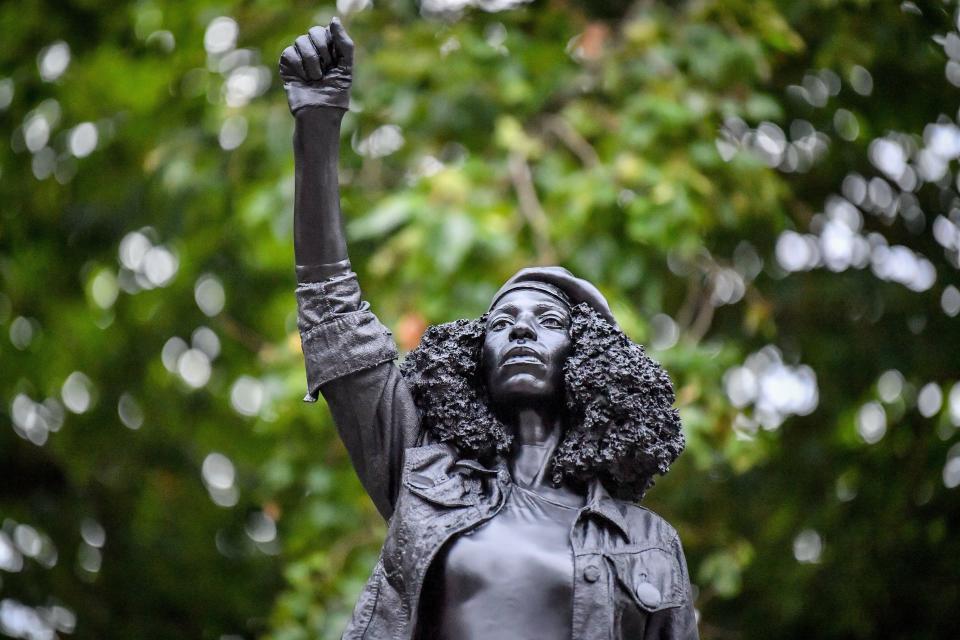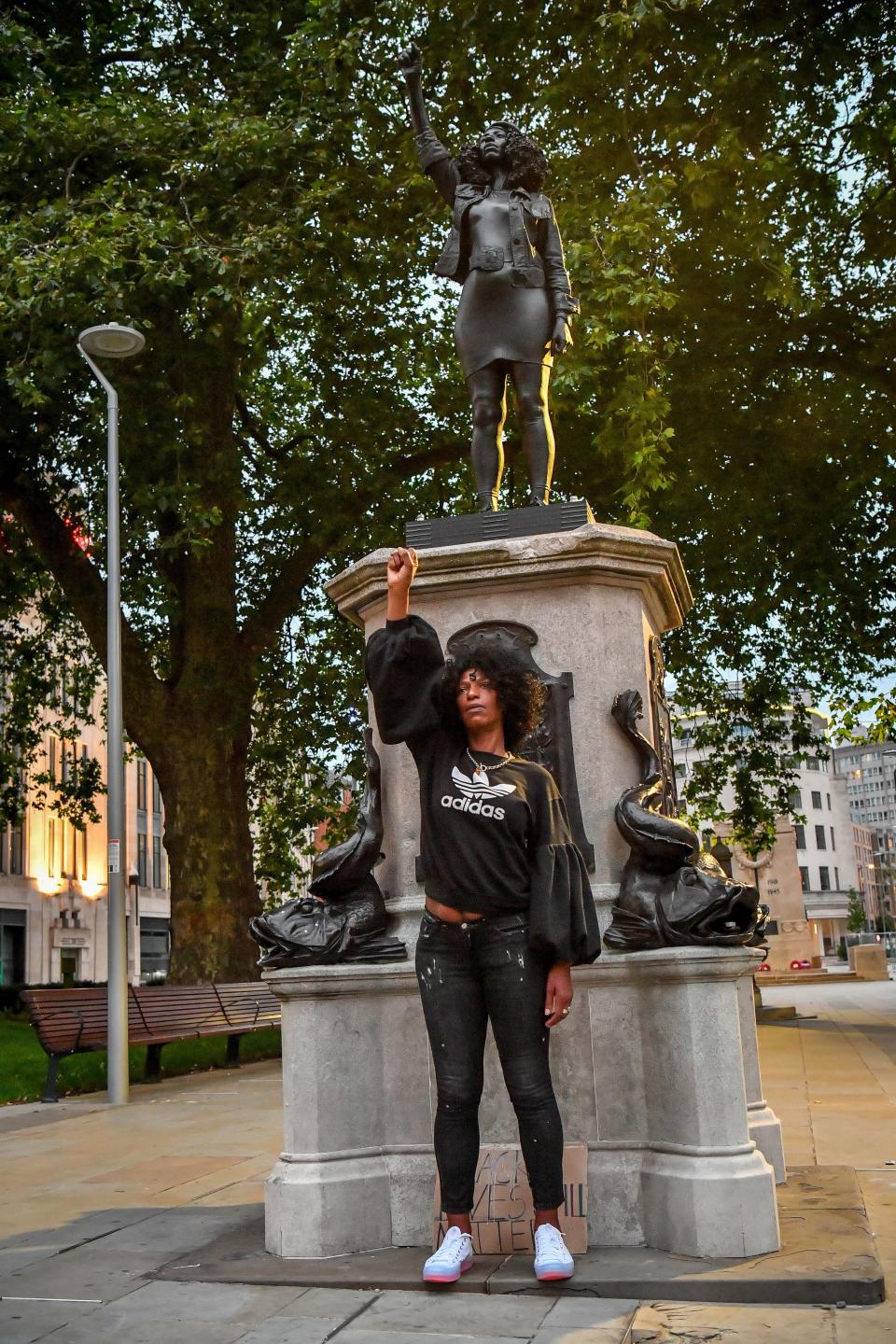Toppled Slave Trader Statue In UK Replaced By Sculpture Of Black Lives Matter Protester
A sculpture of a Black Lives Matter protester has been erected in Bristol, England, on the plinth where a statue of slave trader Edward Colston once stood.
Artist Marc Quinn created the black and resin steel piece of protester Jen Reid, who was photographed standing on the empty plinth after the Colston statue was toppled during a march in June.
The sculpture, entitled “A Surge of Power (Jen Reid),” was erected shortly before 5 a.m. local time on Wednesday by Quinn’s team without the prior knowledge of Bristol City Council.
Mayor Marvin Rees previously said any decision on how the plinth should be used would be decided democratically through consultation.

After the sculpture was installed, Reid stood in front of it with her fist in the air.
She recalled climbing onto it after the Colston statue was pulled down and spontaneously raising her arm in a Black Power salute.
“It was like an electrical charge of power was running through me,” the stylist said.
“My immediate thoughts were for the enslaved people who died at the hands of Colston and to give them power.
“I wanted to give George Floyd power, I wanted to give power to Black people like me who have suffered injustices and inequality. A surge of power out to them all.”

She added: “Creating this sculpture is so important as it helps keep the journey towards racial justice and equity moving, because Black lives matter every day.
“This sculpture is about making a stand for my mother, for my daughter, for Black people like me. It’s about Black children seeing it up there.
“It’s something to feel proud of, to have a sense of belonging, because we actually do belong here and we’re not going anywhere.”
On June 7, protesters used ropes to pull the Colston statue, which was erected in 1895, from its plinth in Bristol city center.
It was dragged to the harborside, where it was thrown into the water at Pero’s Bridge – named in honor of enslaved man Pero Jones who lived and died...



